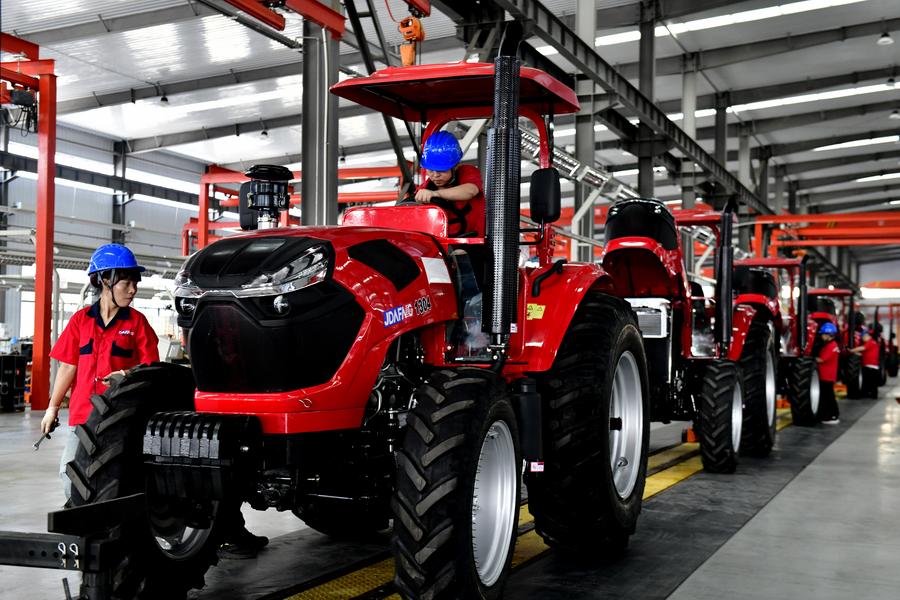China's economic output continues expansion with stable PMIs

Staff members work at a factory of agricultural machinery in Da'an Town of Jining City, east China's Shandong Province, July 13, 2024. [Xinhua/Guo Xulei]
BEIJING -- China's economic output continued to grow in July as the business outlook remained optimistic, but seasonal factors including heat waves and floods somewhat dragged down the expansion.
According to the purchasing managers' index (PMI) released Wednesday by the National Bureau of Statistics (NBS), the composite PMI output index stood at 50.2 this month, mildly down from 50.5 in June. The manufacturing PMI inched down to 49.4, and the PMI for the service and construction sectors combined retreated to 50.2.
A PMI reading above 50 indicates expansion, while a reading below 50 reflects contraction.
Commenting on the data, NBS senior statistician Zhao Qinghe said business activities saw a slowdown in expansion.
The manufacturing sector registered a slightly lower business climate due to unfavorable factors including the traditional slack season, insufficient market demand, and extreme weather conditions, he said, adding that high temperatures and floods also dampened the construction sector.
Despite the headwinds, most enterprises still held a positive outlook on the market trend, the data showed.
The sub-index on business expectations came in at 53.1, 56.6 and 52.9 for manufacturers, service providers and construction companies, respectively. In particular, the pharmaceuticals, the railway, ship and aerospace equipment, and the electrical machinery saw their expectation indexes at 57 or above, indicating strong optimism.
The Chinese economy posted a stable 5 percent year-on-year expansion in the first half of 2024, a growth rate expected to take the lead among major global economies.
A slew of pro-growth measures have been introduced to boost investment and consumption and stimulate economic vitality this year, which include a new round of large-scale equipment upgrades and consumer goods trade-ins and the issuance of ultra-long special treasury bonds.
The National Development and Reform Commission (NDRC), the country's top economic planner, announced last week that approximately 300 billion yuan (about 42 billion U.S. dollars) will be allocated to encourage enterprises to replace old machinery and individuals to buy new cars, home appliances and phones.
Specifically, buyers of new energy and fuel vehicles will enjoy subsidies up to 20,000 yuan and 15,000 yuan, respectively, nearly double the previous levels, according to the NDRC.
China recently also cut the benchmark lending rates for both one-year and over-five-year loans to 3.35 percent and 3.85 percent, respectively, to shore up the economy. Analysts believe the move will help reduce the financing costs of businesses and spur home purchases.
Despite the continued recovery, the Chinese economy still faces challenges at home and abroad.
At a key meeting on Tuesday, policymakers noted that the country faces adverse impacts from changes in the external environment, and effective domestic demand remains insufficient. Various risks and potential dangers persist in major sectors, alongside challenges stemming from the transition from traditional growth drivers to new ones.
Efforts will be made to foster new quality productive forces in light of local conditions, strengthen macro regulation and tap the potential of domestic demand, among other endeavors, according to the meeting of the Political Bureau of the Communist Party of China Central Committee.
Stronger macro regulation will help stabilize market expectations, strengthen business confidence, and ensure that the full-year economic and social development targets are achieved, said Zeng Gang, deputy director of the National Institution for Finance & Development.
























